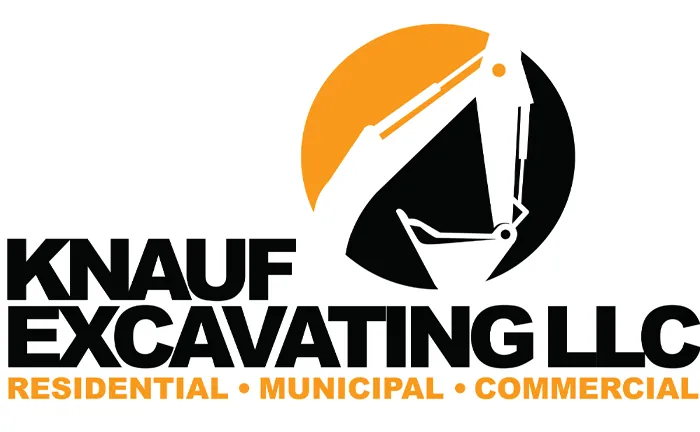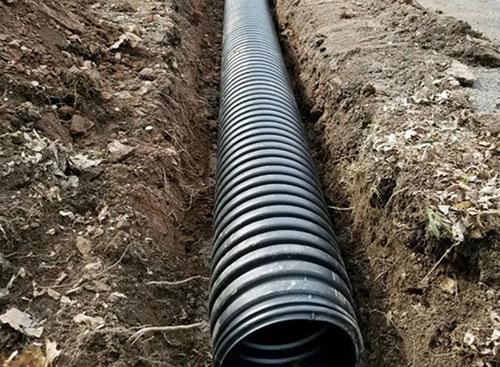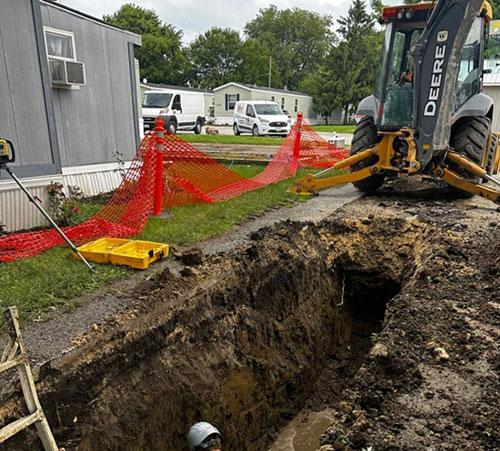
Serving Wisconsin Counties: Marathon, Oneida, Villas and Lincoln Counties
Drainage Systems near Marathon County, Wisconsin
Knauf Excavating LLC is Committed to superior quality and results!

AVOID COSTLY MISTAKES:
Do NOT hire an excavating contractor without first reading our free guide:
The ULTIMATE Excavation & Septic "Success Guide."

Drainage Systems near Marathon County: Why They Matter in Wisconsin’s Climate
If your yard turns soggy after every storm or spring thaw, you are not alone. Freeze and thaw cycles, clay-heavy soils, and sudden downpours put pressure on homes across Marathon County. The right drainage design moves water away from foundations, sidewalks, driveways, and septic areas so your property stays usable and safe year-round.
How Can We Help?


The Core Benefits of Modern Drainage Systems near Marathon County, Wisconsin
A good system is more than a pipe and a pit. It is a coordinated plan that shapes where water collects, how fast it moves, and where it safely exits. Here is what homeowners typically gain:
Foundation protection. Redirecting roof runoff and surface water reduces hydrostatic pressure on basement walls, helping prevent cracks, seepage, and costly structural repairs.
Drier, healthier basements. Less moisture means fewer musty smells, lower mold risk, and a more comfortable space for storage or living.
Preserved landscaping and hardscape. Lawns, beds, patios, and walkways last longer when they are not waterlogged or heaving after every freeze.
Safer surfaces. Slope and collection points reduce ice sheets on drives and paths, lowering slip hazards in long Wisconsin winters.
Septic relief. Keeping stormwater out of drain fields prevents overloads and premature failures.
Erosion control. Stabilized soils keep mulch, gravel, and topsoil where they belong, protecting investments and nearby waterways.
Higher curb appeal and value. A dry, tidy yard photographs well and helps buyers trust the property’s care.
Systems Commonly Installed near Marathon County
Every lot is different, but most successful plans combine several elements:
Surface grading and swales to guide sheet flow gently downhill.
French drains to intercept subsurface water before it reaches structures.
Downspout extensions that quietly move roof runoff 10 to 20 feet from the foundation.
Catch basins, channel drains, or yard inlets to gather low spot water and convey it through a solid pipe.
Dry wells or infiltration trenches for safe on-site dispersion when municipal storm ties are not available.
Curtain drains the upslope of structures to cut off seepage.
Benefits of Hiring a Professional for Drainage Systems near Marathon County, Wisconsin
You could trench a hose and call it good, but drainage mistakes are sneaky and expensive. Local professionals bring:
Site-specific design. Pros understand Marathon County soils, frost depth, utility locations, and local codes in Wisconsin.
Precise elevations. Laser levels set the right slope so water flows without scouring.
Durable materials. From perforated pipe with filter sock to washed stone and geotextile, quality parts resist clogging and frost movement.
Smart integration. Gutters, grading, hardscape, and septic components should cooperate, not compete.
See Our Excavation & Septic Services

✔️ Commercial Excavation
✔️ Residential Excavation
✔️ Swimming Pool Excavation
✔️ Basement Digging
✔️ Basement Backfill
✔️ Shoreline Restoration
✔️ Driveway Construction
✔️ Municipal Excavating
✔️ Snow Plowing Service
✔️ Demolition
✔️ Large Pond Construction
✔️ Small Pond Construction
✔️ Dozer Work
✔️ Septic Inspections
✔️ Septic System Pumping
✔️ Septic Installs Traditional Systems
✔️ Septic Tanks - Aerobic Systems
Quality Services Launched FAST!

✔️ Septic Tanks - Plastic/Poly
✔️ Septic Tanks - Concrete
✔️ Drain Field Replacement
✔️ Forestry Mulching
✔️ Grading, Lot Clearing
✔️ Retaining Walls
✔️ Sewer Repairs
✔️ Drainage Systems
✔️ Concrete Flatwork
✔️Driveways, Sidewalk, Foundations
✔️ Foundation Repairs
✔️ Full Site Preparation
✔️ Trenching
✔️ Utilities Trenching
✔️ Grade Shed Pad
✔️ Site Construction
What Are You Waiting For?
The Process for Hiring Drainage Systems near Marathon County, Wisconsin
Use this step-by-step approach to go from soggy to solid:
1. Define the problems clearly. List where water shows up, how long it lingers, and what it damages. Video short clips during heavy rain to document flows.
2. Request a site assessment. A reputable installer will walk the property, shoot grades, locate utilities, and consider roof area, soils, and outlets.
3. Review a written plan. Expect a drawing with elevations, pipe types, aggregate specs, fabric details, outlet locations, and restoration notes.
4. Compare apples to apples. If you seek multiple quotes, make sure pipe diameter, lengths, depth, stone gradation, fabric weight, and discharge plan match.
5. Schedule around Wisconsin weather. Spring and summer are popular, but fall installs often settle well before freezing. Winter work may be possible for trench-only scopes.
6. Protect permits and utilities. Confirm any needed erosion control, right of way access, or outlet permissions. Call 811 before digging to mark lines.
7. Monitor installation. Look for proper trench depth, continuous slope, clean stone, and fabric wrapping that separates soil from aggregate.
8. Test the system. Before final backfill, flow test with a hose to confirm movement and outlet performance.
9. Restore and maintain. Seed or sod disturbed areas, keep inlets clear of leaves, extend downspouts, and check outlets after major storms.
Design Notes for Wisconsin Homes
Slope matters. Even a one percent grade, about one eighth inch per foot, keeps water moving without eroding soil.
Fabric is your friend. Geotextile around French drains prevents soil migration and extends system life.
Rock right. Washed angular stone offers void space and resists compaction better than pea gravel.
Mind the outlet. Discharge to an approved location that will not ice up across sidewalks or neighbor driveways.
Think long term. Add cleanouts for jetting, and keep future landscaping or paving plans in mind.
When to Upgrade Existing Drainage Systems near Marathon County, Wisconsin
Consider improvements if you notice standing water longer than forty-eight hours, basement dampness after normal rain, heaving pavers, sinking topsoil, or soggy zones around the septic field. Older buried mystery pipes without fabric or with minimal stone are common culprits. Modernizing with proper depth, slope, filtration, and outlets usually pays back quickly in avoided repairs.
Cost Drivers to Expect in Wisconsin
Budgets vary with trench length, depth, access, soil type, restoration needs, and whether a lawful outlet exists. Runs through roots or drive crossings add time and materials. The best way to control cost is with a tight plan with clearly specified materials and elevations. Surprises disappear when the scope is detailed in writing.
Your Next Step
If water keeps finding its way to your basement or lawn, it is time to redirect it with purpose. With thoughtful design and experienced installation, Drainage Systems near Marathon County can turn wet trouble spots into dependable, low-maintenance parts of your property, built for long-term Wisconsin weather.
Hours: Mon-Fri 7AM-5PM
Extended hours by appointment only.
Address: 1250 W. Campus Dr. Wausau, Wisconsin 54401
All rights reserved | Client Support Area